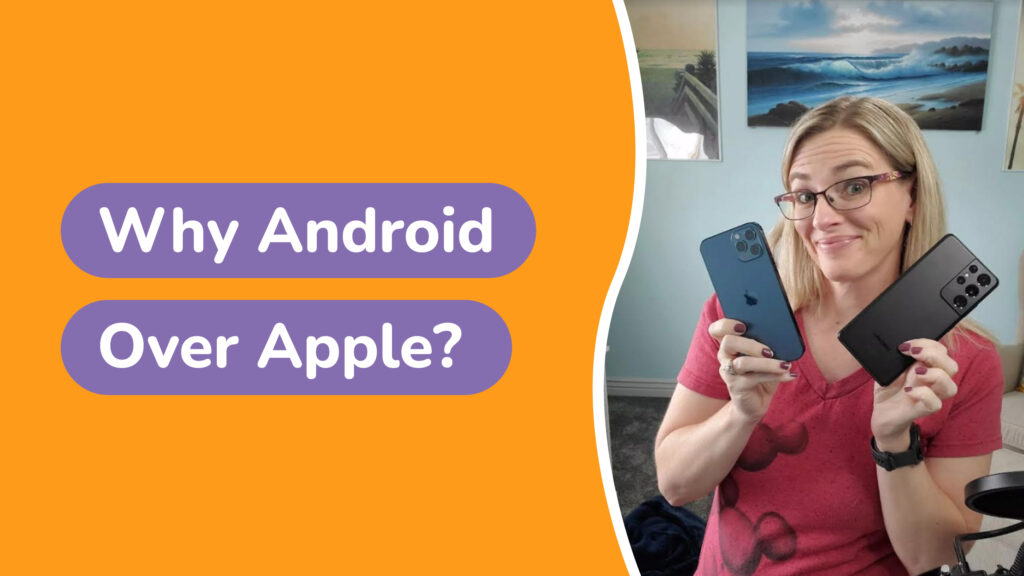
Android vs Apple: you see this debate play out all over the tech world. So, which one is better? There are strong feelings on both sides of this fight. However, as with most technologies, the answer is really whichever one fits your needs the best. That is the great thing about technology—you can choose what works best for you.
When it comes to our kids, though, is there a platform that is better if you are trying to keep them safe? The answer might surprise you, especially if you are an Apple fan. Android is actually a better option to choose for a kid’s phone, and there are several reasons for this.
Monitoring Issues
One reason many adults choose iOS devices is because Apple has outstanding security for their devices. They are also extremely concerned about user privacy. The problem here is that they are so concerned about user privacy that they will protect that user’s privacy, even if the user is a ten-year-old kid.
What this means is that parents who want to make sure their child is safe online won’t be able to do so through parental controls if the child has an iOS device. Many of the parental control applications have attempted to get around this limitation by running their monitoring software on a local computer. When the child’s device runs a backup to that computer, the monitoring software picks up the data from the backup.
If the child does anything inappropriate on their device and deletes the evidence before they arrive home, the monitoring software would not detect that activity. Additionally, since the software evaluates the backup and not the device itself, the software is unable to monitor interactions on social media platforms like Discord, Snapchat, and Instagram. On Android devices, however, monitoring apps can help parents keep their child safe in real time.
Privacy Features
Recently Apple has released a few privacy features for their iOS devices. Again, for adults using their products, these features can be great. But for a parent trying to protect their children, these features can make things difficult.
The first feature is the ability to create a private MAC address for the device. If you have a Wi-Fi router that provides parental controls for your wireless network, you can assign each device to a specific user so you can maintain Internet limitations on the device. With this feature turned on, the device may occasionally change its MAC address automatically.
The MAC address is the only identifier that the parental control device can see. If the device changes its MAC address, the person using that device may no longer be under the restrictions the old address was under, since it is now seen as a completely new and different device.
iCloud Private Relay is another feature that is causing problems for parents trying to maintain their child’s devices. With this feature turned on, the device acts like it is connected to a VPN. This will also bypass any restrictions put in place on the device from the wireless network. If you are using a content filter on your home network, iCloud Private Relay will bypass the filter and give unrestricted access to the Internet.
Third Party Restrictions
Apple is a closed ecosystem. It was years before Apple would let iOS users utilize a different map program than their own built-in one. Similarly, this ecosystem does not play nicely with third party parental control products. As mentioned previously, most third party apps cannot even be installed on the child’s device itself. This makes your choices for trying to help protect your children extremely limited if they have an iOS device.
This means that in order to control an iOS device, you also need to use an iOS device. If your child has an Android, you can manage it with Google Family Link from an iPhone or from an Android device. While Apple does have some great parental controls built in to their operating system, they are not as robust as some of the parental control solutions that are available.
Safety First
The bottom line here is that Apple doesn’t offer your child the same safety features that an Android might. There are many ways to circumvent parental controls, and iOS devices make this task so much easier.
If your parental control platform uses a VPN to control your child’s device, the VPN can be disabled through the settings on the Iphone. Unfortunately, there is nothing in place to prevent a child from simply turning off the controls.
Even Apple’s new messages that warn your child if they receive inappropriate content can be easily overridden. A child would only need to tap a button that says “allow” to see the content, and it does not notify the parent of the issue unless the child chooses to notify the parent.
I don’t know about you, but when I was a 12-year-old kid, I thought I knew everything. In fact, many young kids likely think they know what’s best for them, but we as parents recognize that they still need a little guidance—especially when it comes to tech. With Apple, kids have complete control over what they are exposed to, and until they learn how to navigate tech safely, this freedom should be thoughtfully given by their parents.
If you really want to have the broadest range of tools to protect your children, you absolutely should get them an Android device over an Apple device. As they prove themselves trustworthy on the Android, you can then graduate them to an Apple device as they get older. Set them up for success later by choosing an Android device today. And check out Troomi to find a selection of child-safe smartphones that prevent dangers like social media, cyberbullying, and pornography.
